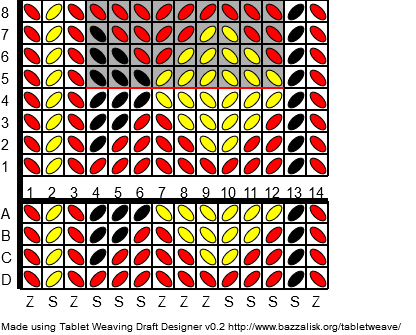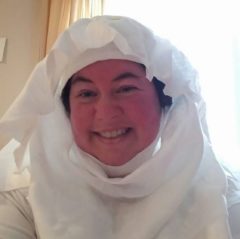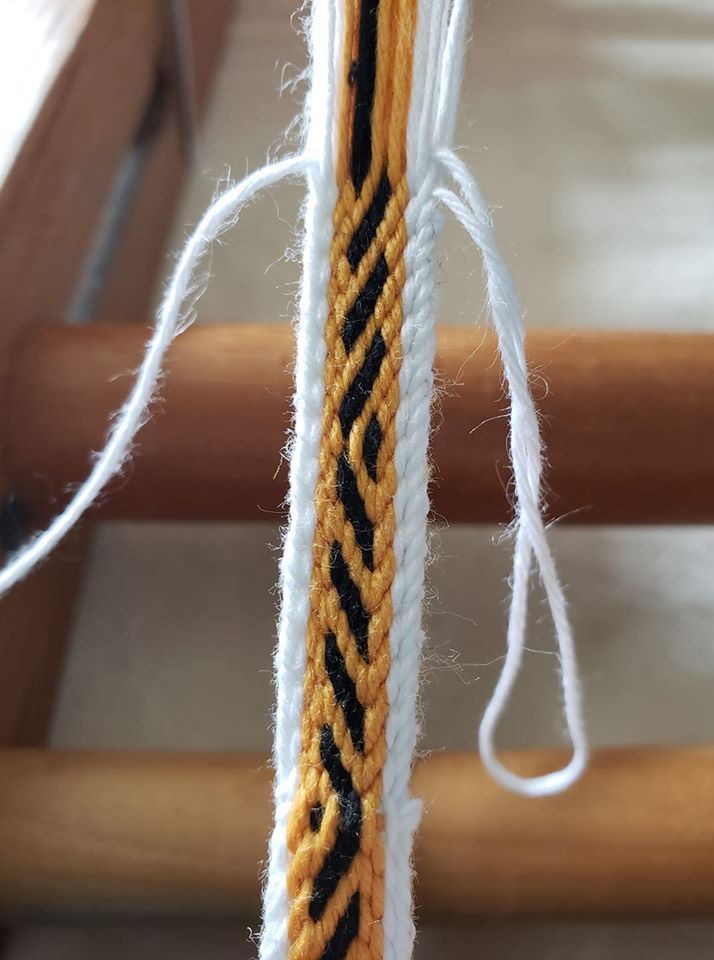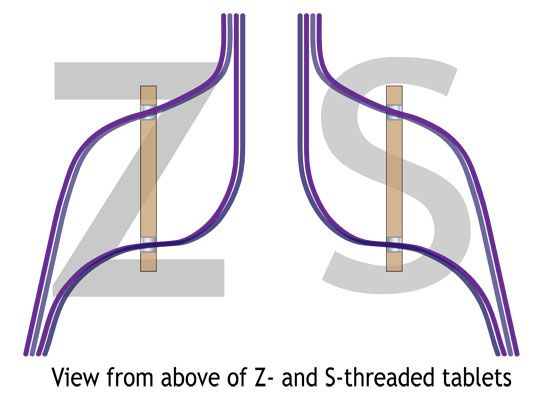Kaukola Kekomaki #379
If you were to ask me for book recommendations, and you have!, one of the books that I will recommend to every historic tablet weaver is Applesies and Fox Noses, Finnish Tabletwoven Bands from Maikki Karisto and Mervi Pasanen.

This is a collection of 30 patterns ranging from very easy to difficult, and includes period motifs from tablet weaving fragments found from the Finnish Iron Age, which ranges from 500 BC to 1300 AD.
The other comments I’ve gotten from the Tablet Weaving for Absolute Beginners is that the pattern was too complex. If you want to start your first tablet woven band and want a very easy pattern to start with–this is it!

This pattern comes from a fragment found in the Kaukola Kekomaki graveyard dating from the Karelian Iron Age–as mentioned above. This three-color fragment was found on a dress, a detailed drawing of this 14 mm wide band (slightly over 1/2″) is in Theodor Schwindt’s book, Tietoja Karjalan rautakaudesta (“About the Karelian Age”), published in 1893. The item is labeled as #379.

Some of you may have seen this pattern or similar ones on Pinterest or come across it in Google searches. The web site for these two amazing weavers is https://hibernaatio.blogspot.com where they have several other patterns. You may panic for a moment because there are quite a lot of words you don’t recognize…yes, it’s written in Finnish. But DON’T PANIC–if you look carefully, you’ll see there is also English written in there! Not this pattern, of course, but on the web site. It’s OK.
You’ll notice that this pattern doesn’t have S and Z written under the pattern, and you’ll also see that the pattern is labeled DCBA…upside down! And the card is COUNTERCLOCKWISE! AAAAAHHHHH!
No, don’t panic. Let’s plug that into the tablet weaving draft designer: https://jamesba.github.io/tabletweave/ and make the bubbles look the same as the image.

There we go! Now, if you’ve watched my previous weaving videos, or if you’re familiar with this notation, you should be able to warp this one up! And if you’re not familiar with the Applesies charting system, you also now have the key for how their notations will translate into warping your loom.

This next piece in the Laurel Kingdoms project is honoring the Kingdom of Ansteorra (which means “one star”–totally appropriate for the Lone Star State!), which was elevated from a Principality to a Kingdom in 1979, which encompasses Oklahoma and Texas. Their colors are red, black and yellow.









